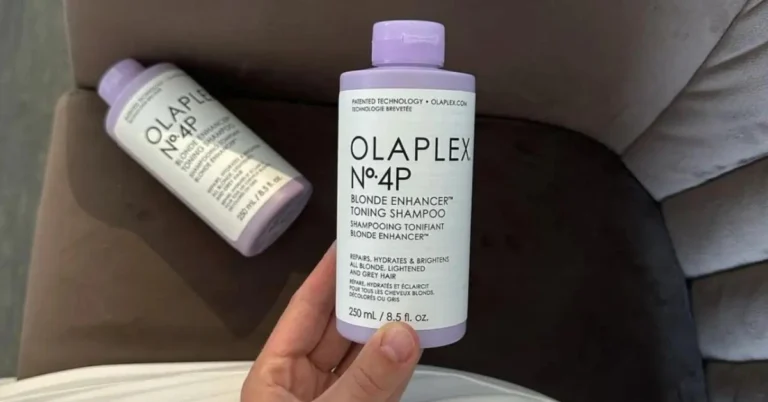Is it Possible to Mix Salicylic Acid with Retinol? Salicylic acid and retinol rank as some of the most popular and effective ingredients in skincare.
Salicylic acid is a type of beta hydroxy acid that is known for its ability to exfoliate and unclog pores, while retinol is a form of vitamin A that can help reduce the appearance of wrinkles and improve skin texture. Many skincare enthusiasts wonder if it is safe to mix these two ingredients, and if so, how to do it properly.
In this article, we will explore the benefits of using salicylic acid and retinol together, as well as potential side effects and tips for incorporating them into your skincare routine.
So, can you mix salicylic acid and retinol? Keep reading to find out!
Table of Contents
Can You Mix Salicylic Acid and Retinol?
Yes, it is possible to mix salicylic acid and retinol in your skincare routine. But it is important here that you apply them at different times or even better on different days because in combination they can cause skin irritation and sun damage, as they increase the sensitivity of your skin to the sun.
Both ingredients offer unique benefits and can work together to improve the appearance of the skin.
Plus, I would recommend you to use them correctly and in the right concentrations to avoid dryness, irritation, and other side effects and to use them at different times (not in layers one after the other!), follow up with a moisturizer, be consistent, and use sunscreen.
The Benefits of Salicylic Acid and Retinol
Salicylic acid and retinol are both powerful ingredients that can offer a range of benefits for the skin.
Salicylic acid is a type of beta hydroxy acid (BHA) that is derived from willow bark. It is known for its ability to exfoliate the skin, unclog pores and reduce the appearance of blemishes. Salicylic acid works by penetrating deep into the pores to remove excess oil and dead skin cells, which can help to prevent future breakouts. It is also an anti-inflammatory, which can help to reduce redness and irritation caused by acne.
Retinol, on the other hand, is a form of vitamin A that can help to improve the appearance of fine lines, wrinkles, and uneven skin tone. Retinol works by increasing cell turnover, which can help to promote the growth of new, healthy skin cells. It also helps to boost collagen production, which can improve skin elasticity and firmness.
When used together, salicylic acid and retinol can work in synergy to improve overall skin appearance and texture. Salicylic acid unclogs pores and exfoliates the skin, while retinol promotes cell turnover and collagen production, resulting in a clearer, more youthful-looking complexion.
It’s worth noting that both can increase skin sensitivity to the sun and it’s highly recommended to use sunscreen when using them.
It is important to use these ingredients under the guidance of a dermatologist, as they may not be suitable for all skin types and may cause irritation if not used correctly.
How to Use Salicylic Acid and Retinol Together

When used correctly, salicylic acid and retinol can be a powerful combination for improving the appearance of the skin.
Here are some tips for incorporating them into your skincare routine:
- Start with a low concentration: Begin by using products with a low concentration of both ingredients. This will help your skin to adjust to the new routine without causing excessive dryness or irritation.
- Use them at different times: It’s best to use retinol in the morning and salicylic acid at night or even better – to use them on different days. Salicylic acid can cause sun sensitivity, so it’s best to use it while you sleep day and to wear sunscreen the morning after.
- Salicylic Acid should not be applied every day, as it can cause skin irritation – 2-3 times a week is quite enough. Retionol, on the other hand, can be applied as well as every day in the morning.
- Follow up with a moisturizer: Salicylic acid and retinol can be drying, so it’s important to follow up with a good moisturizer to keep the skin hydrated.
- Be consistent: To see the best results, it’s important to use these ingredients consistently over time. Give your skin at least six to eight weeks to adjust to the new routine.
- Use sunscreen: As mentioned before, using salicylic acid and retinol can make your skin more susceptible to the sun, so it’s highly recommended to use sunscreen when using these ingredients.
- Consult a dermatologist: These ingredients are quite strong and not suitable for all skin types, it’s always a good idea to consult a dermatologist before incorporating them into your skincare routine, especially if you have sensitive skin or any other skin condition.
It’s also important to pay attention to your skin’s reaction when using these ingredients. If you notice any severe side effects such as severe redness, itching or burning, it’s best to stop using them and consult a dermatologist.
What Should You Not Combine with Salicylic Acid?
- Other exfoliants: Salicylic acid is already an exfoliant, so it’s important to avoid combining it with other exfoliants such as glycolic acid or mechanical scrubs, as this can lead to excessive dryness and irritation.
- Vitamin C: Salicylic acid can make the skin more sensitive to sunlight, so it’s important to avoid combining it with other photosensitizing ingredients such as vitamin C, as this can increase the risk of sun damage.
- Benzoyl peroxide: Salicylic acid and benzoyl peroxide are both used to treat acne, but they should not be used together as they can cause excessive dryness, redness and irritation.
- AHA (alpha hydroxy acids): Salicylic acid is a BHA and AHA’s are also exfoliants. They are different types of exfoliants and can cause excessive dryness and irritation when used together.
- Retinoids: Salicylic acid and retinoids are both powerful ingredients and can be drying and irritating when used together. If you want to use both, it’s best to use them at different times of the day, and to start with a low concentration.
Is it OK to use salicylic acid cleanser with retinol?
It is generally considered safe to use a salicylic acid cleanser with retinol, as long as they are used in the correct concentrations and at the appropriate times. I would recommend you use retinol in the morning and a salicylic acid cleanser at night because salicylic acid can cause sun sensitivity.
When using both ingredients together, it’s important to start with a low concentration of each and to use a gentle, non-foaming cleanser. It’s also important to follow up with a good moisturizer to keep the skin hydrated.
It’s also worth noting that both can make the skin more sensitive to the sun and it’s highly recommended to use sunscreen when you use them (even the morning after!).
Can you use salicylic acid and retinol in the same day?

It is generally recommended to use salicylic acid and retinol at different times of the day, rather than using them together. Salicylic acid is best used in the evening, as it can cause sun sensitivity.
Using retinol in the morning and salicylic acid at night allows the skin to benefit from the unique properties of each ingredient without causing excessive dryness or irritation.
If you want to use both ingredients on the same day, it is important to start with a low concentration of each and use a gentle, non-foaming cleanser that is formulated for use with both salicylic acid and retinol. It’s also important to follow up with a good moisturizer to keep the skin hydrated.
What is the best combination with retinol?
Retinol can be used in combination with a variety of other skincare ingredients to enhance its effectiveness and target specific skin concerns.
Here are some popular combinations with retinol:
- Hyaluronic acid: Retinol can cause dryness and flakiness, using a hyaluronic acid-based moisturizer can help to keep the skin hydrated and reduce the risk of irritation.
- Niacinamide: A form of vitamin B3, niacinamide has been shown to reduce the appearance of fine lines and wrinkles, improve uneven skin tone, and enhance skin barrier function. When used with retinol, it can help to reduce irritation and improve the overall health of the skin.
- Peptides: Peptides are short chains of amino acids that can help to promote collagen production and improve skin elasticity, when used with retinol it can help to reduce the appearance of fine lines and wrinkles.
- Sunscreen: As retinol can increase the skin’s sensitivity to the sun, it’s important to use a broad-spectrum sunscreen when using retinol to help prevent sun damage.
If you liked this blog article about the question: Can You Mix Salicylic Acid and Retinol?, don’t forget to leave us a comment down below to tell us about your experience with Salicylic Acid and Retinol.




